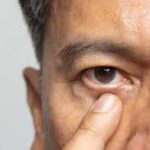
Can I Get Rid of Acne Scars?
September 16, 2025
3 Types of Cataract Surgery Available
September 17, 2025Identifying potential vision impairment in children at an early stage supports their overall development. Since young children may not be able to articulate what they are experiencing, observation by parents and caregivers becomes a primary method for detecting possible problems. Recognizing specific signs and behaviors can prompt a consultation with an eye care professional. Here is more information on common indicators of vision difficulties in children, and guidance on when to seek a professional evaluation:
Identifying Common Signs
Certain physical signs may suggest an underlying vision impairment issue. One of the most apparent indicators is frequent eye rubbing, especially when the child is trying to concentrate on a task. You might also notice that a child often squints or tilts their head to one side when looking at objects, both near and far. Another sign is a sensitivity to light, where a child may frequently close one eye in bright sunlight.
Additional physical symptoms can include:
- Eyes that appear to cross or turn outward
- Watery or red eyes
- Visible misalignment of the eyes
Observing these physical cues can be the first step in identifying a potential vision problem that warrants further investigation.
Understanding Behavioral Clues
A child’s behavior can also provide clues about their visual function. Difficulties with attention are sometimes linked to vision. A child might avoid reading and other close-up activities or lose their place while reading. They may also hold books or digital devices unusually close to their face.
In some cases, a child might exhibit poor hand-eye coordination during activities like catching a ball or tying their shoes. Complaining of frequent headaches or tired eyes, particularly after school or during homework, is another behavioral indicator. These behaviors suggest that visual tasks may be strenuous for the child.
Getting Professional Advice
If you observe any of the signs or behaviors mentioned, arranging a professional evaluation is a potential next step. A comprehensive eye examination for a child is different from an adult screening. Eye care specialists use specific techniques and equipment designed for pediatric patients to assess eye health and visual function.
These examinations evaluate visual acuity, eye alignment, and the overall health of the eye structures. An evaluation can determine if a vision problem exists and what the subsequent steps should be. Regular check-ups are also a part of a child’s general health monitoring, with specific schedules often recommended by healthcare providers based on age and risk factors.
Learn More About Vision Impairment
Observing a child’s physical symptoms and behaviors offers valuable insight into their visual health. Signs like frequent eye rubbing, squinting, and avoiding reading can all point to an underlying vision issue. Behavioral changes, such as difficulty with schoolwork or poor coordination, may also be related to how a child sees. Recognizing these indicators and seeking a professional evaluation helps in the early identification of potential problems. This proactive approach allows for the timely management of any vision-related difficulties, which supports a child’s ability to learn and interact with their environment. If you suspect your child is experiencing vision issues, consult with a qualified provider to learn more.





